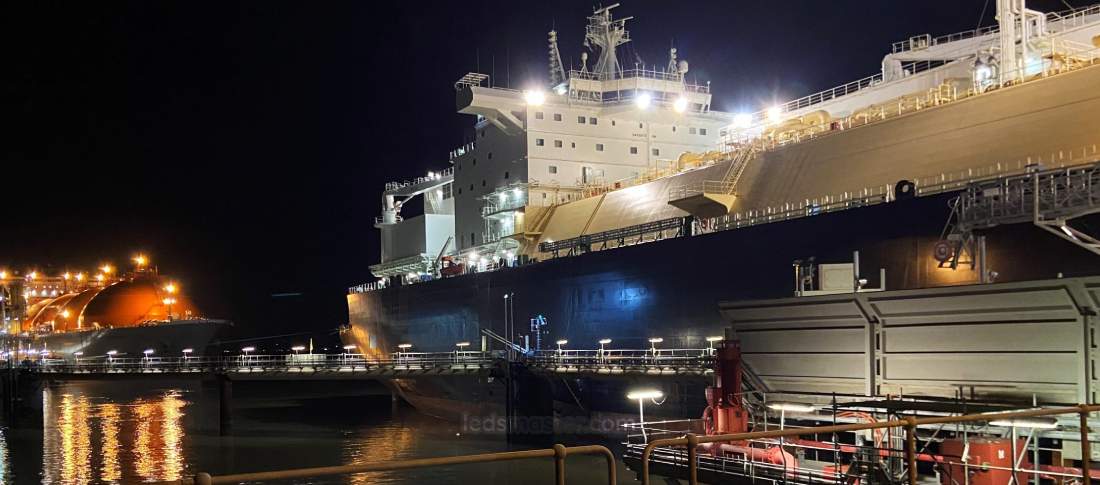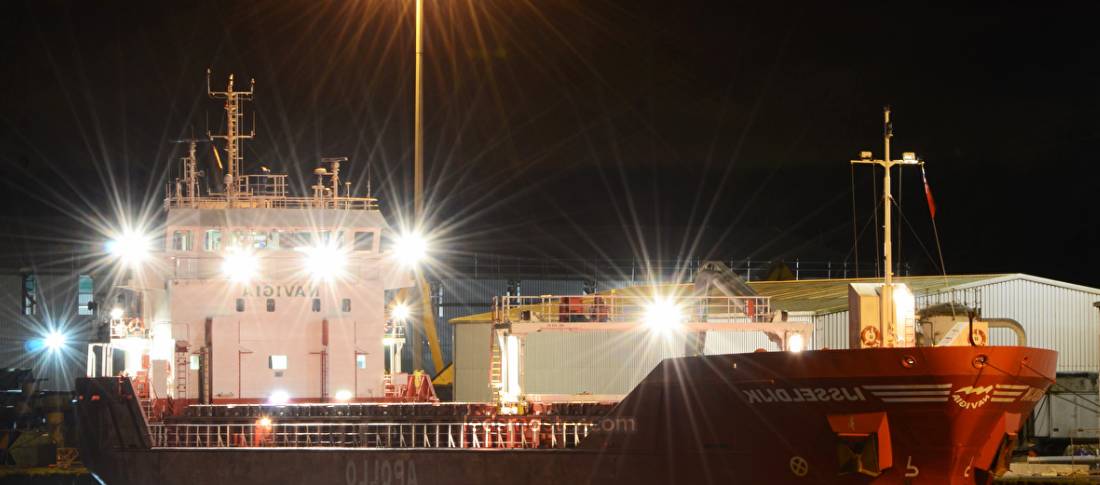Illuminate your tanker ship with precision and reliability using our advanced tanker ship lighting solutions. Designed for maritime environments, our lighting systems ensure optimal visibility and safety during all sea conditions. From powerful deck lights to specialized navigation lamps, our products are crafted to meet international maritime standards, offering durability and efficiency.
In the vast expanse of the world’s oceans, tanker ships navigate through varying conditions, relying heavily on robust lighting systems to ensure safe passage and operational efficiency. These specialized lighting solutions play a critical role in maritime safety, facilitating navigation, signaling, and operational tasks. This article explores the essential aspects of tanker ship lighting, from its functional requirements to the technological advancements that drive its design and implementation.
Get your complimentary lighting design today
Table of Contents
ToggleThe International Maritime Organization (IMO) is the principal authority setting guidelines for the maritime industry, including stringent regulations governing tanker ship lighting systems. These regulations aim to enhance safety by mitigating collision risks and improving visibility in various maritime conditions.

At the heart of the lighting system on tanker ships is the navigation light configuration. Navigation lights are essential for indicating the vessel’s position, heading, and operational status. The standardized configuration includes a red port light on the left side of the vessel, a green starboard light on the right, a white stern light at the rear, and a white masthead light at the highest point of the ship. These lights are critical for other vessels to understand the tanker’s maneuvering intentions, thereby preventing potential collisions in busy shipping lanes or during nighttime operations.
Deck lighting ensure the safety of crew members during various operational tasks. These lights illuminate work areas on the deck, facilitating cargo operations, maintenance tasks, and emergency procedures. Effective deck lighting is particularly vital during nighttime activities when visibility can be severely limited. Floodlights and spotlights are often employed to provide adequate illumination in these areas, ensuring that crew members can perform their duties safely and efficiently.
Signal lights are another component of the lighting system on tanker ships. These lights serve a dual purpose: facilitating communication among crew members and signaling to nearby vessels. Flashing beacons and strobes can be used to alert other ships or personnel about the vessel’s status or to convey specific messages. The functionality of these lights becomes even more pronounced during emergencies when rapid communication can be crucial for coordinating responses and ensuring crew safety.
Interior lighting systems maintain a safe and comfortable environment within the vessel. General lighting illuminates living quarters, corridors, control rooms, and other essential areas, contributing to crew morale and operational efficiency. Additionally, emergency lighting is critical in guiding crew members during evacuations or power outages. These systems must comply with safety regulations to guarantee that crew members can navigate effectively in emergency situations.
Depending on the type of cargo being transported, specialized lighting systems may also be required. For example, tankers carrying hazardous materials must use explosion-proof lighting in areas where flammable gases or liquids may be present. These systems are designed to prevent accidental ignition and to ensure the safety of the crew and the vessel. Chemical tankers, in particular, have stringent lighting requirements that align with international regulations for the transport of hazardous materials, ensuring safe handling from loading to unloading.
Tanker ships utilize various lighting types, each serving a specific purpose in maintaining safety, visibility, and operational efficiency.
The navigation lighting systems ensure that the vessel is visible to other ships and for communicating its direction and status. The lights must be positioned and maintained according to strict regulations to ensure maximum effectiveness. The standard configuration includes various types of lights, such as the aforementioned port and starboard lights, stern lights, and masthead lights. Each of these lights has specific characteristics and must be functioning correctly to promote safe navigation.
Deck lighting is fundamental to the safe operation of tanker ships, particularly during cargo handling and maintenance activities. Floodlights and spotlights are commonly used to provide sufficient illumination for crew members working on deck. The placement and intensity of these lights are critical, as they ensure that work areas are well-lit, thereby reducing the risk of accidents and injuries.
Signal lights ensure effective communication aboard tanker ships. These lights can include a range of signals, such as flashing beacons and strobes, which convey messages or warnings to nearby vessels or personnel. The design and functionality of signal lights are paramount, especially in emergency situations where quick communication can significantly impact safety outcomes.
Interior lighting systems contribute to the overall safety and comfort of crew members. General lighting illuminates various spaces, including cabins, dining areas, and operational zones. Emergency lighting systems are crucial for maintaining visibility during power outages, helping crew members identify safe evacuation routes and ensuring compliance with safety regulations.
Different types of cargo necessitate specialized lighting solutions. For instance, chemical tankers must utilize lighting systems that comply with specific regulations for transporting hazardous materials. These systems often include explosion-proof lighting to minimize risks associated with flammable or toxic substances. By employing specialized lighting, operators can ensure safe handling of cargo throughout the transportation process.
Tanker ships operate in diverse maritime environments, exposing their lighting systems to challenges posed by saltwater, waves, and harsh weather conditions. As a result, the lighting systems aboard these vessels must be designed to withstand these elements while maintaining functionality.
Lighting systems on tanker ships are equipped with advanced waterproofing features to ensure reliability under various environmental conditions. Waterproofing technologies involve the use of materials and seals that prevent water ingress, protecting sensitive components such as LED modules and circuitry. Effective waterproofing is essential not only for functionality but also for the overall safety of the vessel, ensuring that navigation lights, deck lights, and signal lights remain operational in adverse weather.
Waterproofing measures extend beyond basic functionality; they contribute significantly to the safety and operational efficiency of tanker ships. Reliable navigation lights and signal lights that can withstand rain, waves, and sea spray are vital for maintaining visibility and communication during critical operations, such as loading, unloading, and navigating narrow channels.
In addition to waterproofing, the lighting systems must be resistant to corrosion caused by prolonged exposure to saltwater. The use of corrosion-resistant materials is essential for prolonging the lifespan of lighting equipment, reducing maintenance costs, and enhancing safety.
The maritime industry is continually evolving, with advancements in lighting technology significantly transforming tanker ship illumination. These advancements emphasize energy efficiency, durability, and environmental considerations.
Light-emitting diode (LED) technology has become increasingly popular in maritime lighting applications due to its numerous advantages. LEDs have a long lifespan, low power consumption, and high luminosity, making them well-suited for use in various lighting systems aboard tanker ships. Compared to traditional incandescent bulbs, LED navigation lights provide enhanced visibility and require less energy to operate, contributing to reduced operational costs and a smaller carbon footprint.
The shift to LED lighting systems is part of a broader movement toward energy-efficient practices in the maritime industry. The durability and longevity of LED systems mean that they require fewer replacements and less maintenance, ultimately reducing operational costs and minimizing environmental impact. By adopting energy-efficient lighting solutions, the maritime sector can align with global sustainability goals while maintaining high safety standards.
Smart lighting systems may incorporate sensors to detect ambient light levels and adjust illumination accordingly, optimizing visibility while conserving energy. The integration of smart technologies into lighting systems is expected to enhance safety and operational efficiency, as vessels become more responsive to their environments.
The maritime environment presents unique challenges for tanker ship lighting systems. Weather conditions, including fog, storms, and heavy rainfall, can obscure visibility, making it essential for lighting solutions to be robust and reliable.
Lighting systems must be designed to perform optimally under various weather conditions. This includes ensuring that lights maintain their effectiveness during low visibility situations. Weather-resistant materials and technologies can help mitigate these challenges and ensure the continued functionality of lighting systems during adverse weather.
This includes routine inspections to check for signs of wear or damage, timely bulb replacements, and adherence to manufacturer guidelines. Implementing proactive maintenance strategies can minimize the risk of lighting failures during critical operations.
Crew training on the importance of lighting systems and their maintenance ensure operational efficiency. Crew members should be familiar with the proper procedures for checking and maintaining lights and understanding the implications of malfunctioning systems during operations. This training helps create a culture of safety and accountability aboard tanker ships.

The effective integration of lighting systems with navigation and communication technologies is crucial for enhancing maritime safety and operational efficiency.
Automated lighting controls can synchronize with a ship’s navigation systems to adjust light intensity and direction based on various factors, such as vessel speed, course changes, and environmental conditions. This integration allows for a more responsive lighting system that adapts to the specific needs of the vessel, thereby promoting safer navigation.
Integrating communication capabilities into lighting systems enables real-time monitoring and remote diagnostics of lighting performance. This functionality allows for the early detection of issues, facilitating proactive maintenance and troubleshooting. By continuously monitoring lighting systems, operators can maintain optimal performance and safety throughout the vessel’s operations.
The integration of lighting systems with navigation technologies enhances situational awareness among crew members. By providing clear visibility of surrounding conditions and the vessel’s operational status, integrated systems contribute to safer and more efficient maritime operations. Enhanced situational awareness is especially critical during complex maneuvers or when navigating through busy ports.
The maritime industry is under increasing pressure to minimize its environmental footprint, and lighting systems play a role in this endeavor. Sustainable lighting solutions, such as LED technology, can significantly reduce energy consumption and lower greenhouse gas emissions. By prioritizing energy-efficient practices, the maritime sector can align itself with global sustainability goals while maintaining high safety standards.
The adoption of energy-efficient lighting solutions contributes to lowering the carbon footprint of tanker ships. LED lights consume significantly less energy compared to traditional lighting options, resulting in reduced fuel consumption and greenhouse gas emissions. This shift toward more sustainable practices reflects the industry’s commitment to environmental stewardship.
Adhering to international regulations and standards related to environmental impact is also essential for tanker ships. Compliance not only ensures safe operations but also fosters a culture of accountability among operators. This commitment to regulatory compliance reflects a dedication to maintaining high safety standards and protecting the marine environment.
The lighting systems aboard tanker ships ensure safe navigation and operational efficiency in the maritime industry. Governed by stringent regulations and propelled by technological advancements, these systems play a crucial role in enhancing visibility and communication at sea. The ongoing evolution of lighting solutions, characterized by energy-efficient practices and enhanced integration with navigational technologies, reflects the maritime industry’s commitment to safety and sustainability. As stakeholders continue to prioritize reliability and efficiency, tanker ships can confidently navigate the seas, ensuring the effective transport of vital liquid cargo worldwide. By embracing innovative lighting solutions and adhering to international standards, the maritime sector can enhance safety and minimize environmental impact while fulfilling its essential role in the global economy.